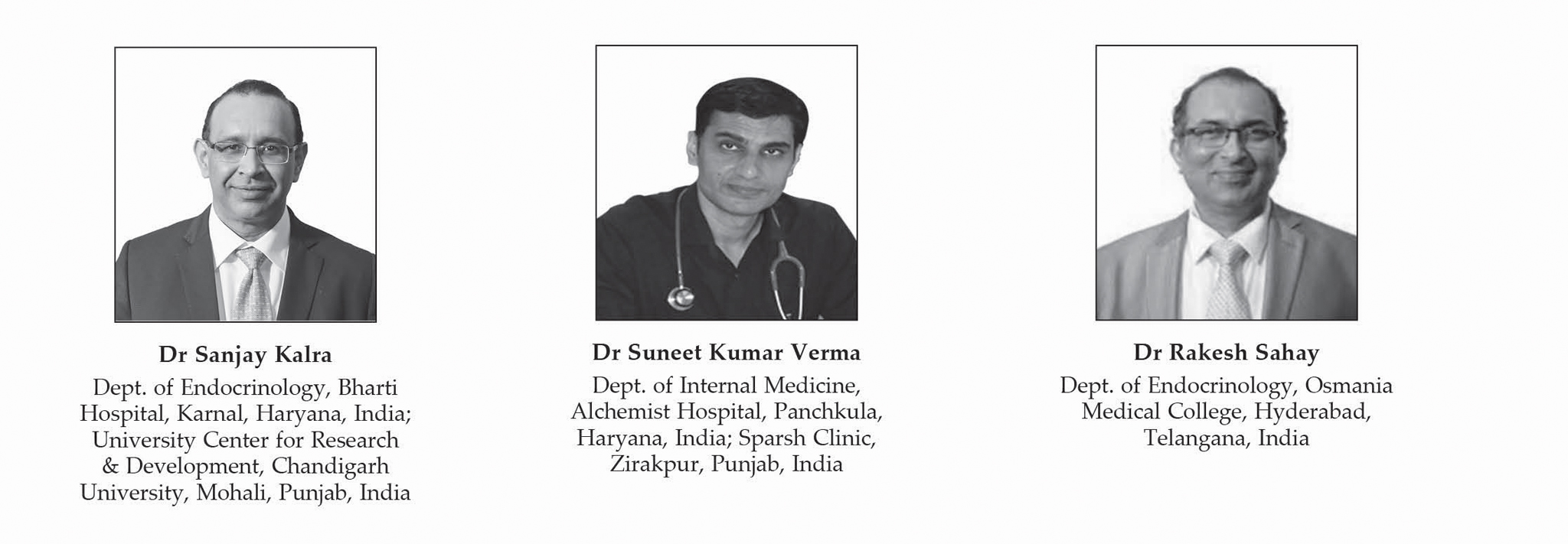
Introduction
Insulin is essential for life. While most persons produce adequate amounts of insulin, not everyone is lucky enough. Persons living with type 1 diabetes, with pancreatic diabetes, and with severe or long-standing type 2 diabetes need exogenous insulin for survival.1 Many persons with type 2 diabetes and comorbidities such as renal or hepatic impairment, severe sepsis or infection, also require insulin. Insulin is also the drug of choice for glycemic control during pregnancy. Unfortunately, however, insulin is expensive, and may be out of reach of many people who need it.2 One way of ensuring affordable insulin is to declare it an essential drug.
India’s National List of Essential Medicines
The National List of Essential Medicines (NLEM), India reflects this thought process. Successive editions of the NLEM have included various preparations and strengths of insulin.3,4 This year’s NLEM lists four insulins: soluble, NPH (neutral protamine Hagedorn) premixed insulin and glargine, irrespective of delivery device.5 It is assumed that all strengths (40 IU/mL and 100 IU/mL for human insulin, and 100 µ/mL for glargine) are included in the essential list. The 50:50 premixed insulin preparation is not included in NLEM, though it must be admitted that it is not as commonly prescribed as the 30:70 preparation.
The addition of insulin glargine in the Indian NLEM is a welcome development. This underscores the acceptance of the need to provide safe and effective medication to persons living with diabetes at an affordable cost. The updated NLEM highlights India’s commitment towards providing world-class treatment to its citizens, and towards ensuring that the noncommunication disease epidemic is addressed aggressively. The Indian pharmaceutical industry has contributed immensely to the production of economical and efficient insulin, not only for the domestic, but also for the global market.6 An Indian insulin glargine brand has received a label for interchangeability with originator brands from the United States Food and Drug Administration (US FDA),7 it implies the quality, robustness in clinical data and more importantly “a make in India product to the global need” which addresses two key barriers, i.e., affordable and accessible insulin to all. US FDA defines Interchangeable if the biological product “is biosimilar to the reference product” and “can be expected to produce the same clinical result as the reference product in any given patient.”8 The ‘interchangeable’ status can prompt faster and wider uptake of insulin biosimilars and keep the insulin expenditure under control, especially for patients who otherwise practice nonadherence or rationing of life-saving insulin.
National Lists of Essential Devices and Essential Diagnostics
Persons living with diabetes need much more, however. Just as insulin preparations are essential, so are insulin delivery devices like syringes, pens and pumps.9 Insulin monitoring systems, such as glucose monitors, urine sugar strips, ambulatory/continuous glucose monitoring systems are equally essential to ensure safe and accurate therapy. Equal emphasis should therefore be placed on diabetes care in the National Lists of Essential Devices and Essential Diagnostics.
Noninsulin Medications
The 2022 NLEM contains a brief, yet comprehensive, list of noninsulin oral medications.5 Their listing reflects the increasing disease burden of diabetes, as well as the efficacy, safety and cost-effectiveness of the drug. Teneligliptin, a dipeptidyl peptidase 4 (DPP-4) inhibitor has been added this year. The sulfonylurea glimepiride, and the insulin sensitizer, metformin, complete the list. No sodium-glucose co-transporter 2 (SGLT2) inhibitor or glucagon-like peptide 1 receptor agonists (GLP-1RA) figure in the list, however.
Summary
As we work towards becoming the Diabetes Care Capital of the world (Prof BK Sahay, personal communication), each and every stakeholder’s involvement is important. Diabetes care cannot be achieved without ensuring availability, accessibility and affordability of diabetes related diagnostics, drugs and devices. The NLEM 2022 demonstrates the commitment of the Indian government towards achieving this goal. Sustained and concerted efforts will be needed in the future as well, to accomplish our goals.
References
- Mathieu C, Martens PJ, Vangoitsenhoven R. One hundred years of insulin therapy. Nat Rev Endocrinol. 2021;17(12):715-25.
- Zargar AH, Kalra S, Prasanna KMK, Murthy S, Negalur V, Rajput R, et al. Rising cost of insulin: a deterrent to compliance in patients with diabetes mellitus. Diab Metab Syndr Clin Res Rev. 2022;16(8):102528.
- Kalra S, Bajaj S, Mithal A. Endocrinology and the essential list. Indian J Endocrinol Metab. 2012;16(Suppl 2):S133-5.
- Kalra S. National List of Essential Medicines, 2015: Endocrinology perspective. Indian J Endocrinol Metab. 2016;20(3):412-3.
- National List of Essential Medicines. Available at: https://www.nppaindia.nic.in/en/utilities/national-list-of-essential-medicines/. Last accessed September 14, 2022.
- Sharma A, Kaplan WA. Insulin imports fail to meet many countries’ needs. Science. 2021;373(6554):494-7.
- Tanzi MG. FDA approves first interchangeable biosimilar insulin. Pharmacy Today. 2021;27(10):21.
- Kim AP, Bindler RJ. The future of biosimilar insulins. Diabet Spectr. 2016;29(3):161-6.
- Wahab MU, Raja UY, Kalra S. Essential diagnostics and devices in primary care diabetes. J Pak Med Assoc. 2021;71(9):2281-2.